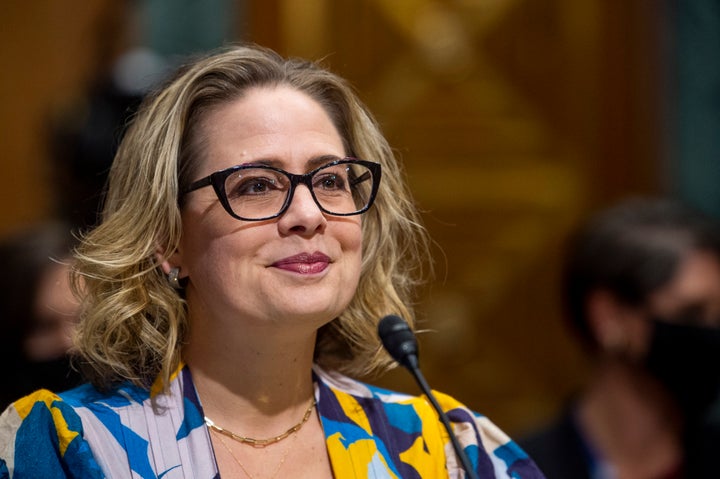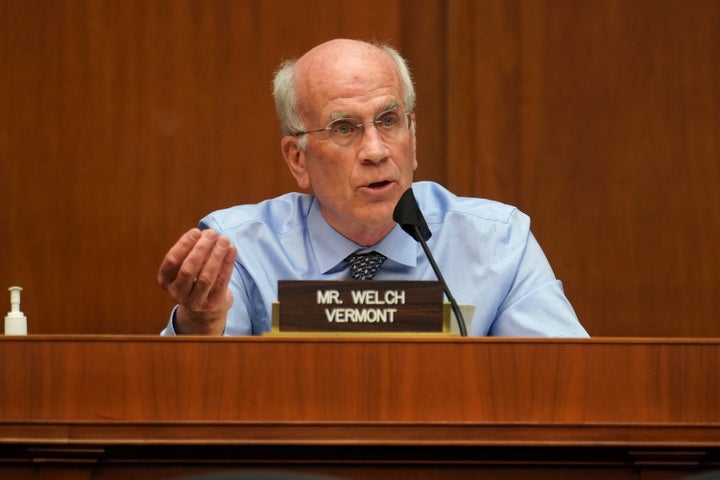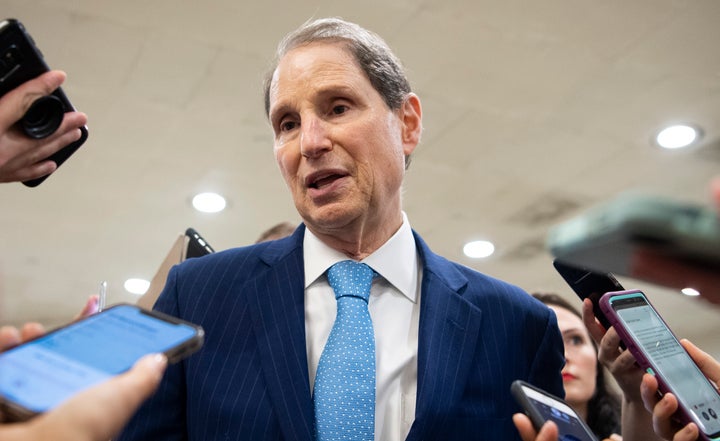Democratic leaders in Congress think they are nearing a deal on reforms that would lower the price of prescription drugs, according to multiple sources.
The mood has improved from a few days ago, when the effort to craft a deal on drugs that could pass Congress seemed to have collapsed. At the same time, negotiations are not done yet, and even if a deal does come together, it’s an open question how much the resulting reforms could actually reduce prices.
What follows is a refresher on how discussions got to this point, a summary of the concepts now under discussion and a look at what those provisions would mean for average Americans ― based primarily on reports in The Washington Post and Politico, public comments by lawmakers, as well as several sources familiar with discussions who have spoken to HuffPost and requested anonymity.
Those sources cautioned that the situation is fluid, with full support from Democrats in both houses not yet secure. In other words, the pieces of a potential agreement could still change and the whole discussion could still fall apart.
The Big Debate Over High Drug Prices
President Joe Biden and Democrats have said they want to give the U.S. government the same kind of authority to limit drug prices held by the governments of other developed countries. In practice, that would mostly mean negotiating prices of some drugs directly with manufacturers and capping inflation ― that is, restricting how much prices can go up year after year.
The hope has been to include a drug pricing initiative in the larger “Build Back Better” legislation Biden and party leaders have been crafting. And the idea has lots of support among Democrats in Congress ― including both progressives and “front-line,” politically vulnerable House members, who have noted that the idea would be popular even with their Republican-leaning constituents.
But despite consistent poll findings to back up that instinct ― and despite the fact that Democrats have been promising this kind of action for more than 15 years ― the idea has run into staunch opposition from a handful of Democratic lawmakers, including Rep. Scott Peters (Calif.) and Sen. Kyrsten Sinema (Ariz.).

These lawmakers have strong support from the pharmaceutical industry and say, as the drugmakers do, that reducing prices would reduce innovation by making it harder to attract the investment capital that underwrites their research.
For months, the White House and party leaders have been working with these holdout Democrats to craft some kind of compromise ― something less ambitious than previous proposals, like a bill House Democrats passed in 2019, but more ambitious than a minimalist alternative Peters proposed earlier this year.
Last Thursday, the whole effort appeared to be dead when the White House announced a tentative Build Back Better framework that left out prescription drugs entirely. But several Democratic lawmakers said they would keep plugging away. They have ― and now a new agreement is starting to take shape.
Government Price Negotiation, The Weak Version
That 2019 House bill envisioned price negotiations over a set number of drugs (at least 50, starting in the program’s second year) that the secretary of health and human services would select from among the drugs that generate the most spending in the U.S.
The new deal would limit the kinds of drugs subject to negotiation. In particular, drugs that are still in their “exclusivity” period ― that is, the time when the Food and Drug Administration guarantees manufacturers can sell them without competition ― would not be subject to negotiation.
That would be a significant blow because it would effectively exempt some of the most expensive drugs from negotiation.
And those wouldn’t be the only types of drugs out of reach for negotiations. “Orphan drugs” that treat rare conditions would be off the list, too, as could some “biologics,” which is the trade name for complex drugs drawn from natural, sometimes living sources and used to treat ailments such as cancer.
Those restrictions would produce legislation a lot closer to the kind of minimal scheme Peters was proposing. But in some respects, the deal under discussion could be stronger.
Peters wants to restrict negotiation to drugs available through Medicare Part B, which is the part of the program that covers inpatient care. The deal under discussion, by contrast, would also allow for negotiation of drugs sold through Part D, which is the part of Medicare that covers drugs seniors buy at pharmacies and take on their own. In addition, the proposed deal would include insulin explicitly.

“Limiting the negotiation clause to drugs beyond the exclusivity period for B and D is obviously far less meaningful than what was in the House proposal but could achieve savings, particularly on the D side,” said Tricia Neuman, executive director of the Henry J. Kaiser Foundation’s program on Medicare.
It’s also notable that the new deal would prohibit negotiation only through the FDA exclusivity period and not, in addition, while drugs are under patent protection. That, too, could make a difference. Exclusivity and patents aren’t the same thing, and drug companies have become adept at manipulating patents in order to extend the period when they are selling drugs without competition.
“If your goal is cost savings, dropping the patent piece and just focusing on exclusivity is probably a good thing, in terms of the number of drugs that could be eligible and when you could start negotiating and things like that,” Lovisa Gustafsson, vice president of the Controlling Health Care Costs program at the Commonwealth Fund, told HuffPost.
One other open question is the negotiation’s enforcement mechanism.
In most other economically advanced countries, governments have leverage because they can decline coverage through their national health systems when manufacturers won’t accept negotiated prices. That idea is widely thought to be politically toxic in the U.S., although private insurers and the Veterans Administration both use similar techniques to bargain down prices.
The old House bill had a different mechanism: a punishing excise tax that drug companies would have to pay if they didn’t use the negotiated price. That may not make it into the deal because at least some of the holdout lawmakers oppose it, although it’s not clear whether they will get their way or what would take its place.
Inflation Caps ― Stronger, Weaker Or Both?
The other big idea for controlling drug prices is to apply those “inflation caps” limiting how much drug companies could raise prices each year. Senate Finance Chairman Ron Wyden (D-Ore.) has said inflation caps must be part of a new deal and, at a press meeting on Monday, he said they were likely to be.
The caps under discussion would apply to drugs in Medicare Part B and Part D, and to private insurance policies as well so that working-age Americans could see savings just like seniors could.

“This is much narrower than previous drug-pricing proposals,” Larry Levitt, executive vice president at the Kaiser Foundation, tweeted after hearing Wyden’s description of several provisions that were generating consensus. “But the idea that drug price increases would be capped at inflation in both Medicare and the commercial insurance market is a big deal.”
Of course, the actual effect of inflation caps depends on their mathematical formulas, and a key variable is the “base year.” Reform proponents have hoped to use a year in the past ― 2016, for example, or maybe even 2012 ― and stipulate that drugs could not cost more than they cost during that year after adjusting for inflation in the intervening years.
Now Democrats are talking about setting this year, 2021, as the base year. That would not produce immediate savings, although it could still limit future price increases. And this is one of the issues still in play, HuffPost sources said, with some Democrats continuing to push hard for an earlier year. (In general, earlier years mean more savings; later years mean less savings.)
Among the other formula elements that have gotten attention is the specific basis for calculating what the old prices were. It’s not clear whether that particular variable is still under discussion, but, if so, it could have a significant effect of its own.
“We have seen a variety of proposals circulating. Some use the U.S. average manufacturer price; some use U.S. wholesale acquisition costs,” Gustafsson said. “The numbers can be pretty different, so that’s another decision point.”
The Benefit Design ― It Matters, Too
Democrats also want to make Medicare’s coverage of drugs more generous by limiting how much seniors have to spend individually on drugs in a given year. Wyden on Monday said one possibility was capping annual out-of-pocket costs at $2,000.
But that could get tricky depending on what else is in the package because if the negotiation and inflation caps don’t lower prices significantly, financing that more generous coverage will require more government spending.
If Democrats do eventually reach a deal ― and, to be clear, that remains a big “if” ― the effect on prices will depend on all of these factors. And it will take even well-informed experts time to parse an agreement’s elements to assess it.
But one very rough heuristic for judging an agreement would be the total savings it promises for the federal government, since Medicare would end up spending less on drugs.
Months ago, Democratic leaders hoped the combination of government negotiation and inflation caps would generate $400 billion to $500 billion in savings over 10 years, enough to offset costs of new initiatives such as adding a dental benefit to Medicare ― or extending private insurance subsidies for working-age people buying coverage through the Affordable Care Act.
The policies now under discussion would almost certainly produce lower savings. And if it’s much lower, then that’s a pretty clear sign the overall reform is a lot weaker, too.
Arthur Delaney and Tara Golshan contributed reporting.
